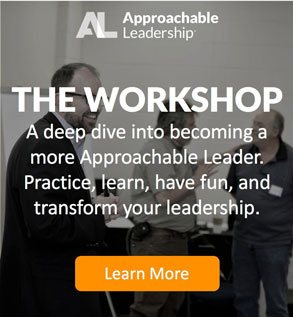Change in the Workplace: 5 Tips for Leaders
How should leaders deal with “always on” change in the workplace?
Are you a creature of habit? I can be. I like to go to only a few places for lunch. The folks at Franklin’s know my order by heart. I wear a sail rigger shirt and jeans to work every day. In the winter I add a sweater. When I work out (not often enough) I do the exact same routine.
Maybe you like change. Sometimes I do too. I am an early adopter of technology. I love to try out new apps. Or new restaurants when I travel. I am regularly (I’m sure my team would way too regularly) tweaking or updating our books, publications, websites, training materials, and more.
The thing is, I can be very resistant to change in some areas of my life, and really excited by changes in other areas. Can you relate?
We often talk about change in the workplace as if people universally resist it. Change is something that happens to people. It’s something you coax or persuade them to do. Change – especially fast-paced change in the workplace – is something people resist. Except when they don’t.
(Check out our recent article on the 3 Reasons People Resist Change).
That’s how Jim Hemerling invites us into his discussion on approaching change in the workplace. He distinguishes between how change makes us feel in our personal lives and how we often think about it at work.
Hemerling reminds us that sometimes we do like change.
Think about people in your life who have made changes in their life. Losing weight or training for a half marathon. Moving into a new place. Competing in cross-fit or a triathlon. Starting a new side project.
People get excited and passionate when they make big decisions for themselves. They think about it and talk about it all the time. They push through any obstacle that gets in their way, and are proud of their progress.
But most change in the workplace is different. We often don’t get to choose to make a change at work; it is forced upon us.
That’s why as leaders we have to reexamine our approach to change. Especially in our world of “always on” transformation. Because if we don’t find a way to make work change more like these positive changes in our lives we will exhaust our people. They’ll give up on change.
What is the right strategy for creating excitement instead of dread when a new process or change in structure is proposed?
Hemerling suggests modeling your strategy off how people approach change in their personal lives. And in order to do that, he says, you must put people first. He outlines 5 keys:
5 Strategic Imperatives for Putting People First
- Inspire through purpose.
- Go all in.
- Enable people with the capabilities that they need to exceed during the transformation and beyond.
- Instill a culture of continuous learning.
- Leaders must be directive AND inclusive.
I’ll let you dive into these imperatives in his TED Talk above. But this is a must watch. Not only does Jim break down the mindset behind people’s approach to change with wisdom and insight, you even get a glimpse into one of my favorite companies (OK, and favorite toys) LEGO.
(Click for more on The Hidden Key to Solve Resistance to Change).
After watching, please take a moment to tell us about your experience with change in the workplace? Have you noticed a difference between how you feel about changes in your personal life versus your life at work? Do you think these 5 Strategic Imperatives make a difference?










